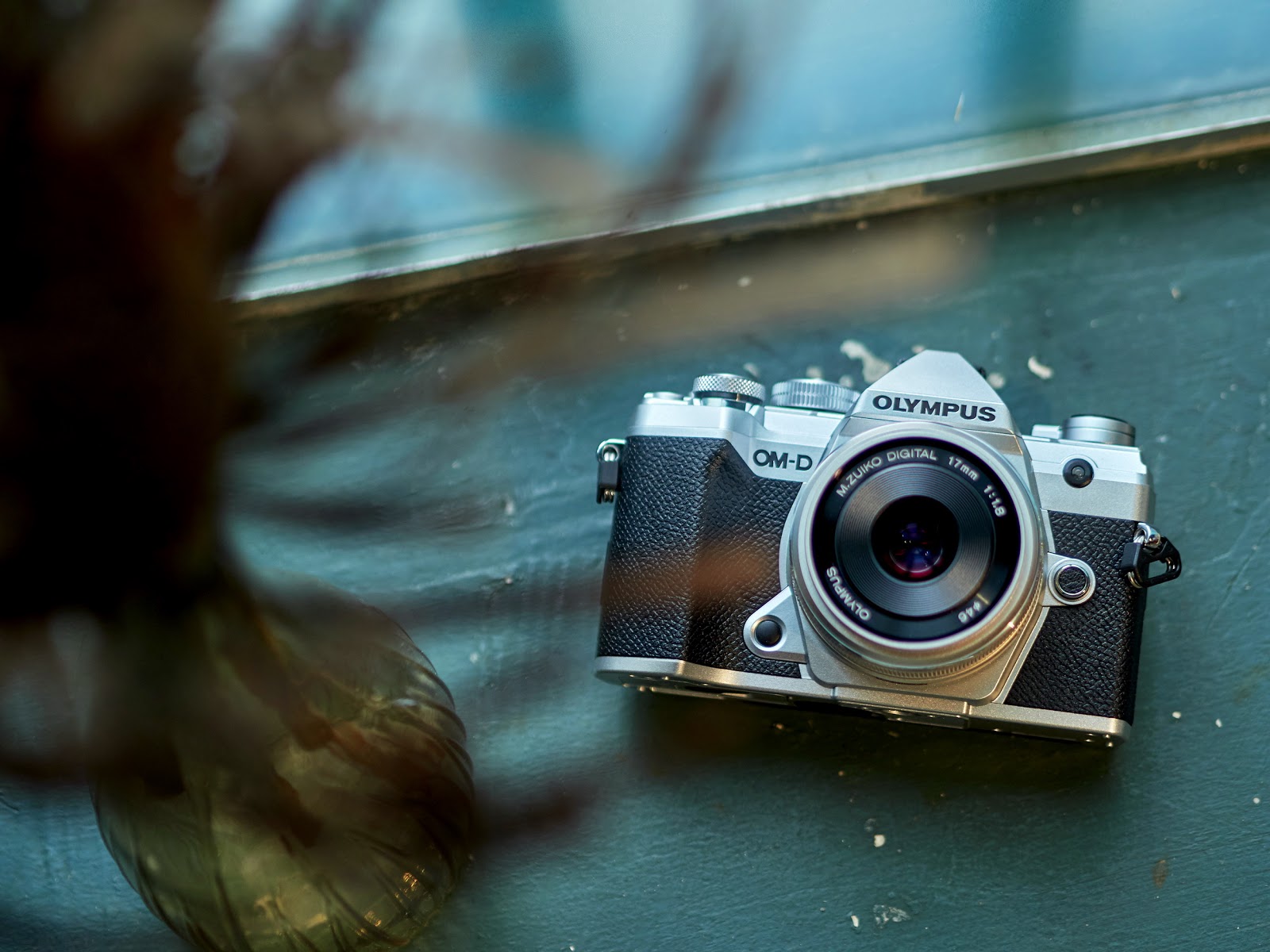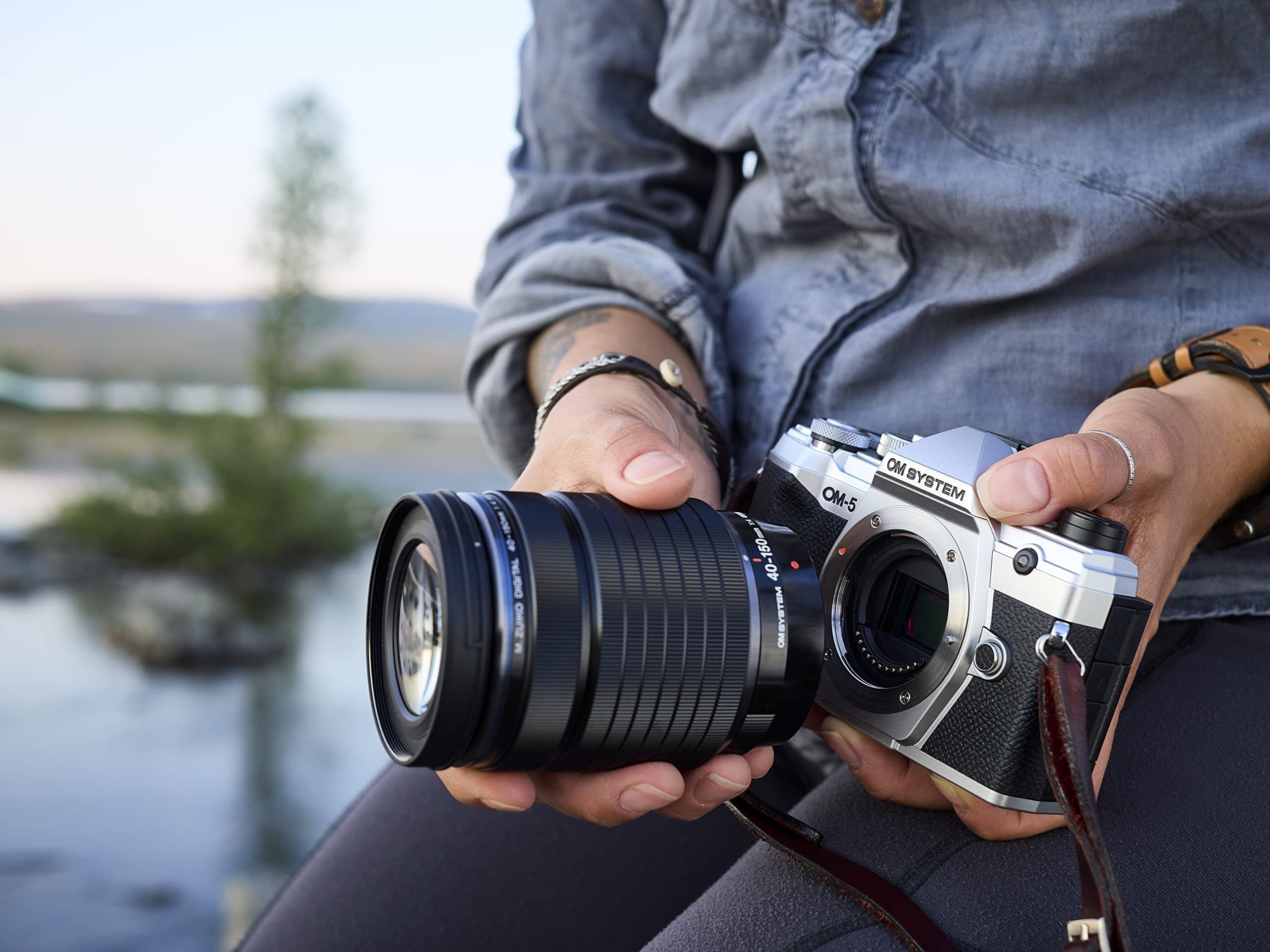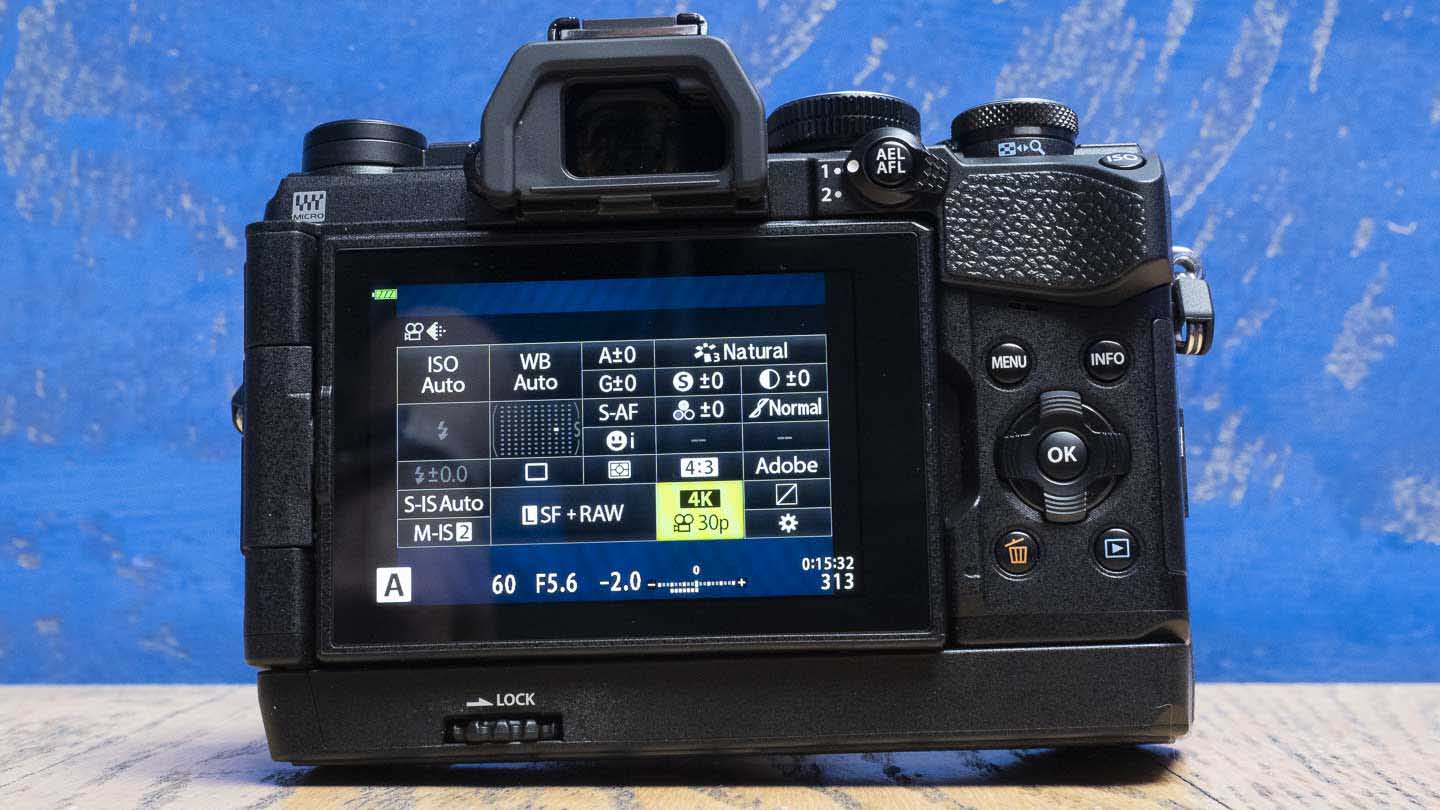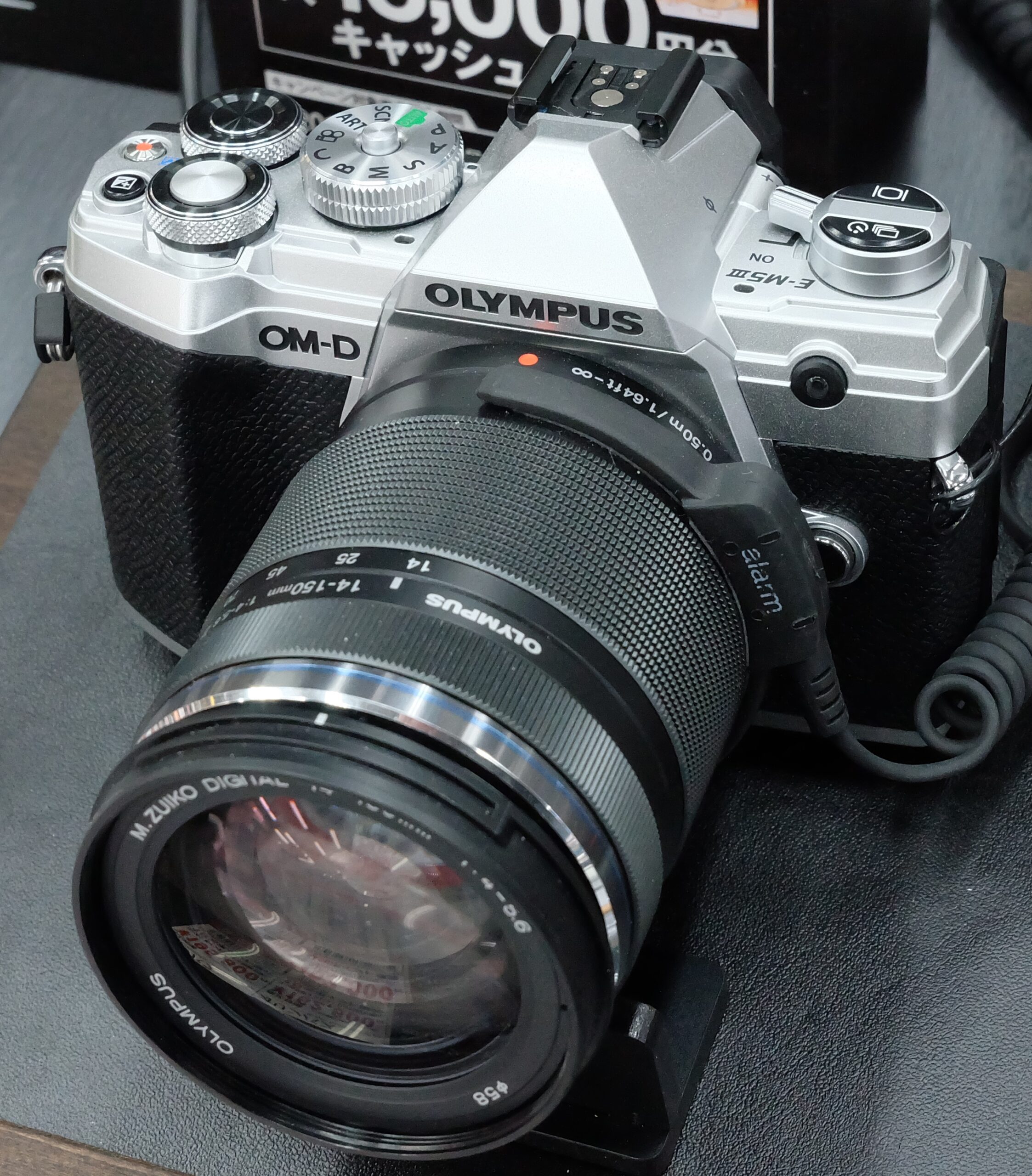Mastering the Basics: A Beginner's Guide to the Olympus OMD-EM-5 Mark III
1. Getting to Know Your Camera
The OMD-EM-5 Mark III is known for its compact yet powerful design. As a beginner, familiarize yourself with the physical layout of the camera. Locate essential components such as the mode dial, shutter button, control dials, and the vari-angle touchscreen. Understanding the camera’s exterior is the first step toward gaining control over your photographic journey.
2. Exploring Shooting Modes
The camera offers a variety of shooting modes catering to different scenarios. The ‘Auto’ mode is perfect for beginners, allowing the camera to make most decisions for you. As you become more comfortable, delve into the ‘Program,’ ‘Aperture Priority,’ and ‘Shutter Priority’ modes, gradually taking control of exposure settings.
3. Mastering Autofocus
Achieving sharp and focused images is crucial in photography. The OMD-EM-5 Mark III boasts a sophisticated autofocus system with 121 points, ensuring precision in various shooting conditions. Experiment with different autofocus modes, such as single-point AF or continuous AF, to understand their applications.
4. Navigating Menu Settings
The camera menu can be overwhelming for beginners, but it houses essential settings that allow you to tailor the OMD-EM-5 Mark III to your preferences. Take time to explore menu options related to image quality, white balance, and custom functions. This exploration lays the groundwork for personalizing your shooting experience.
5. Understanding Exposure Triangle
A fundamental concept in photography is the exposure triangle, consisting of aperture, shutter speed, and ISO. The OMD-EM-5 Mark III provides easy access to these settings, allowing you to control the amount of light entering the camera. Experiment with different combinations to grasp their impact on exposure and creative possibilities.
6. Utilizing Creative Modes
Beyond standard shooting modes, the OMD-EM-5 Mark III offers creative modes and art filters. These features add a touch of artistic flair to your images. Experiment with different filters and modes to discover your preferred style and how they enhance your storytelling through photography.
7. Embracing the Vari-Angle Touchscreen
The vari-angle touchscreen is a standout feature for beginners. It provides flexibility in framing your shots from different angles, making it easier to capture unique perspectives. Practice using the touchscreen for setting focus points, navigating menus, and reviewing images.
Technical Specification
Technical Specifications: Olympus OMD-EM-5 Mark III Mirrorless Digital Camera
Sensor:
- Type: 20.4 Megapixel Live MOS Sensor
- Size: Micro Four Thirds (17.4 x 13 mm)
- Low Pass Filter: Installed
Processor:
- TruePic VIII Image Processor
ISO Range:
- ISO 200-25600 (expandable to ISO 100-25600)
Autofocus:
- 121-Point Contrast-Detect AF System
- Face and Eye Detection AF
- Continuous AF, Single AF, Manual Focus
Image Stabilization:
- In-Body 5-Axis Image Stabilization
- Up to 5.5 stops of compensation
Viewfinder:
- 2.36m-Dot OLED Electronic Viewfinder
- 1.37x Magnification
- 100% Frame Coverage
LCD Screen:
- 3.0″ 1.04m-Dot Vari-Angle Touchscreen
- 180-Degree Flip-Down Design
Shutter:
- Type: Mechanical Shutter (1/8000 to 60 seconds)
- Electronic Shutter (1/32000 to 60 seconds)
- Bulb Mode up to 30 minutes
- Sequential Shooting: Up to 10 fps (mechanical shutter), 30 fps (electronic shutter)
Video Recording:
- 4K UHD Video at 30p
- Full HD Video at 120p
- Flat and Log Color Profiles
- 5-Axis Image Stabilization during video recording
Connectivity:
- Built-in Wi-Fi and Bluetooth for wireless connectivity
- USB Type-C, Micro HDMI, 3.5mm Microphone Input, 3.5mm Headphone Jack
Storage:
- Single SD/SDHC/SDXC Card Slot (UHS-II compatible)
Weather Sealing:
- Dust and Splash-Proof Construction
Battery:
- Rechargeable Lithium-Ion Battery (BLH-1)
- CIPA Rating: Approximately 310 shots per charge
Dimensions and Weight:
- 125.3 x 85.2 x 49.7 mm (4.93 x 3.36 x 1.95 inches)
- Weight: Approximately 414g (0.91 lb) with battery and memory card
Additional Features:
- 50-Megapixel High-Resolution Shot Mode
- Art Filters and Creative Shooting Modes
- Time-Lapse and Multiple Exposure Modes
- Silent Mode for Discreet Shooting
Supported Lenses:
- Compatible with Micro Four Thirds lenses
- Broad selection of Olympus and third-party lenses available
Software Compatibility:
- Compatible with Olympus Workspace and Olympus Image Share apps for remote control and image sharing
These technical specifications provide a comprehensive overview of the Olympus OMD-EM-5 Mark III Mirrorless Digital Camera, showcasing its advanced features and capabilities for photography and videography enthusiasts.

Unleashing Creativity: Tips and Tricks for Creative Photography with OMD-EM-5 Mark III
Photography is not just about capturing moments; it’s an art form that allows individuals to express their creativity and unique perspective. The Olympus OMD-EM-5 Mark III, with its advanced features, provides photographers with a powerful tool to explore and unleash their creative potential. In this guide, we’ll delve into tips and tricks that can elevate your photography to new heights.
**1. Explore Art Filters and Creative Modes:
- The OMD-EM-5 Mark III offers a range of art filters and creative shooting modes. Experiment with settings like “Dramatic Tone,” “Pop Art,” and “Pin Hole” to add artistic effects to your images. These filters can transform ordinary scenes into visually striking compositions, allowing you to infuse your personal style into your photographs.
**2. Master the High-Resolution Shot Mode:
- Take advantage of the camera’s High-Resolution Shot mode to capture incredibly detailed images. This feature combines multiple shots into one, producing a 50-megapixel image. Ideal for capturing landscapes or still-life subjects, this mode enables you to bring out intricate details and textures in your photos.
**3. Play with Depth of Field:
- Experiment with the camera’s aperture settings to control depth of field. A wide aperture (lower f-stop) creates a shallow depth of field, isolating your subject from the background. Conversely, a smaller aperture (higher f-stop) expands the depth of field, capturing more of the scene in focus. Use this technique to add emphasis to specific elements in your composition.
**4. Utilize Creative Composition Techniques:
- Enhance your storytelling through photography by employing composition techniques such as the rule of thirds, leading lines, and framing. These techniques guide the viewer’s eye and add visual interest to your images. Get creative with your framing to create a narrative within the frame.
**5. Experiment with Long Exposure Photography:
- Explore the camera’s capabilities for long exposure shots. Whether capturing light trails in urban landscapes or creating dreamy water effects in nature, long exposure photography can add a dynamic and ethereal quality to your images. Invest in a sturdy tripod to ensure stability during longer exposure times.
**6. Embrace Unconventional Perspectives:
- Don’t be afraid to get down low or shoot from unusual angles. The OMD-EM-5 Mark III’s vari-angle touchscreen makes it easy to explore different perspectives. Capture unique viewpoints to add a fresh and distinctive element to your photographs.
**7. Harness the Power of Natural Light:
- Leverage the camera’s performance in various lighting conditions. Experiment with the interplay of light and shadow to create dramatic effects. Early morning and golden hour lighting can add warmth and depth to your photos, enhancing the overall mood.
**8. Customize White Balance for Artistic Tones:
- Use the white balance settings to achieve specific color tones in your images. Adjusting the white balance creatively can produce warm, cool, or even surreal tones. Play with these settings to evoke the desired emotional response in your photographs.
**9. Capture Candid Moments with Continuous Shooting:
- The OMD-EM-5 Mark III’s high-speed continuous shooting mode allows you to capture a series of images rapidly. This is particularly useful for candid moments or fast-paced action. Experiment with this feature to tell a story through a sequence of images.
**10. Post-Processing for the Final Touch: – Once you’ve captured your creative shots, explore post-processing options to fine-tune your images. Experiment with color grading, contrast adjustments, and selective editing to enhance the overall impact of your photographs.

Exploring the Art of Portraiture: Capturing Stunning Portraits with the OMD-EM-5 Mark III
Portraiture is a profound form of photography, allowing photographers to capture the essence and personality of their subjects. With the Olympus OMD-EM-5 Mark III, a mirrorless camera known for its exceptional image quality and advanced features, diving into the art of portraiture becomes an immersive and rewarding experience. Here’s a guide to help you capture stunning portraits with this remarkable camera.
**1. Understanding the Basics of Portrait Photography:
- Before diving into the technical aspects, understand the fundamental principles of portrait photography. Consider factors such as composition, lighting, and the importance of connecting with your subject. The OMD-EM-5 Mark III provides a versatile platform to experiment with these elements.
**2. Leverage the Autofocus Capabilities:
- The OMD-EM-5 Mark III features a 121-point autofocus system with face and eye detection, ensuring that your subject remains sharp and in focus. Experiment with these autofocus modes to capture compelling and well-focused portraits, particularly in situations where your subject may be moving.
**3. Optimize Aperture for Beautiful Bokeh:
- One of the advantages of the Micro Four Thirds system is its capacity to achieve beautiful bokeh, the pleasing out-of-focus background. Experiment with wider apertures (lower f-stop values) to create a shallow depth of field, isolating your subject and rendering a creamy, blurred background for a professional and aesthetic touch.
**4. Utilize Natural Light and Shadows:
- The OMD-EM-5 Mark III performs exceptionally well in various lighting conditions. Capitalize on natural light to add a soft and flattering glow to your portraits. Experiment with different angles and positions to use natural light to your advantage, creating highlights and shadows that enhance facial features.
**5. Engage the In-Body Image Stabilization:
- Portraiture often involves capturing subtle expressions and details, making image stabilization crucial. The OMD-EM-5 Mark III’s in-body 5-axis image stabilization ensures sharp images, even in low-light situations or when shooting handheld at slower shutter speeds.
**6. Consider Different Perspectives:
- Break away from traditional portrait compositions and explore different perspectives. The vari-angle touchscreen of the OMD-EM-5 Mark III allows for creative framing and unique angles. Experiment with shooting from above, below, or even incorporating environmental elements to tell a more comprehensive story.
**7. Utilize Art Filters for Creative Expression:
- The camera’s art filters add a layer of creative expression to your portraits. Experiment with filters like “Soft Focus” or “Partial Color” to infuse artistic effects into your images. These filters can be particularly useful when you want to convey a specific mood or atmosphere in your portraits.
**8. Custom White Balance for Skin Tones:
- Achieving accurate skin tones is crucial in portraiture. Take advantage of the OMD-EM-5 Mark III’s customizable white balance settings to ensure lifelike and true-to-color skin tones. This is especially important when shooting in mixed lighting conditions.
**9. Experiment with Different Focal Lengths:
- The OMD-EM-5 Mark III is compatible with a variety of lenses. Experiment with different focal lengths to explore the visual impact of wide-angle, standard, and telephoto perspectives. Each focal length can convey a distinct mood and character in your portraits.
**10. Post-Processing and Retouching: – After capturing your portraits, consider post-processing options to enhance the final images further. Experiment with subtle retouching, color adjustments, and black-and-white conversions to achieve the desired aesthetic. The OMD-EM-5 Mark III’s high-resolution sensor provides ample detail for post-processing flexibility.

Mastering Low Light: Night Photography Techniques with OMD-EM-5 Mark III
Night photography opens a realm of creative possibilities, capturing the world bathed in the subtle glow of artificial lights or the ethereal beauty of moonlit scenes. The Olympus OMD-EM-5 Mark III, renowned for its versatility and exceptional performance, is an ideal companion for mastering low-light conditions. Here’s a guide to help you unlock the full potential of night photography with this remarkable mirrorless camera.
**1. Understanding Low Light Challenges:
- Before diving into techniques, it’s crucial to understand the challenges of low-light photography. In dimly lit situations, the camera may struggle to focus accurately, and noise can become more pronounced. The OMD-EM-5 Mark III’s features can help overcome these challenges.
**2. Optimizing ISO Settings:
- The camera’s ISO range of 200-25600, expandable to ISO 100-25600, provides flexibility in adjusting sensitivity to light. In low-light conditions, consider increasing the ISO to ensure proper exposure. Experiment to find the optimal balance between ISO and image quality for your specific scene.
**3. Utilize In-Body Image Stabilization:
- The OMD-EM-5 Mark III’s in-body 5-axis image stabilization is a game-changer in low-light scenarios. It allows you to shoot at slower shutter speeds without introducing camera shake, ensuring sharp images even in challenging lighting conditions.
**4. Selecting the Right Lens:
- Choose a lens that excels in low-light situations. Prime lenses with wide apertures, such as the Olympus M.Zuiko 25mm f/1.2 PRO or similar options, allow more light to reach the sensor. The wider aperture also enables you to create a shallower depth of field, emphasizing specific elements in your night scenes.
**5. Experiment with White Balance:
- White balance plays a crucial role in night photography. The OMD-EM-5 Mark III offers customizable white balance settings, allowing you to adjust color temperature for different lighting conditions. Experiment with warmer tones to convey a cozy atmosphere or cooler tones for a more futuristic feel.
**6. Long Exposure Techniques:
- Embrace the magic of long exposure photography to capture light trails, star trails, or the smooth flow of water in low-light environments. Set your camera on a stable surface or use a tripod, and experiment with exposure times to achieve desired effects.
**7. Focus Techniques in Low Light:
- Achieving precise focus can be challenging in low light. Use the camera’s autofocus capabilities, and consider using manual focus with focus peaking for more control. If shooting stars or distant subjects, set the lens to manual focus and use the camera’s Live View to fine-tune focus.
**8. Experiment with High ISO Noise Reduction:
- The OMD-EM-5 Mark III provides customizable noise reduction settings. Experiment with high ISO noise reduction to find the right balance between reducing noise and retaining image detail. This is especially important when shooting in challenging low-light conditions.
**9. Capturing Nightscapes with Panoramas:
- The OMD-EM-5 Mark III features a High Res Shot mode that can be used for creating high-resolution panoramas. Capture expansive nightscapes by taking multiple shots and combining them in post-processing. This mode can help you preserve details even in low-light situations.
**10. Post-Processing for Enhancement: – Once you’ve captured your night photographs, post-processing can enhance their impact. Experiment with exposure adjustments, contrast, and color grading to bring out the desired mood. The OMD-EM-5 Mark III’s RAW capabilities provide ample data for detailed post-processing.

Behind the Lens: A Close Look at OMD-EM-5 Mark III Lenses and Accessories
The Olympus OMD-EM-5 Mark III is a versatile mirrorless camera, and the choice of lenses and accessories plays a crucial role in expanding its capabilities and tailoring it to specific photographic needs. Let’s take a closer look at the lenses and accessories that complement this remarkable camera, enhancing its performance and providing photographers with a range of creative possibilities.
Lenses for Every Occasion:
Olympus M.Zuiko 12-40mm f/2.8 PRO:
- A versatile workhorse, this standard zoom lens covers a wide focal range suitable for various scenarios. Its constant f/2.8 aperture ensures consistent low-light performance, making it ideal for everyday photography and professional applications.
Olympus M.Zuiko 25mm f/1.8:
- This prime lens with a wide f/1.8 aperture is perfect for capturing stunning portraits with beautiful background blur. The 50mm equivalent focal length provides a natural perspective, making it a favorite among portrait photographers.
Olympus M.Zuiko 45mm f/1.8:
- Another gem for portrait enthusiasts, this lens offers a longer focal length, allowing for more pronounced background blur. With a bright f/1.8 aperture, it excels in low-light conditions, making it an excellent choice for indoor or nighttime photography.
Olympus M.Zuiko 17mm f/1.8:
- This wide-angle prime lens is perfect for capturing landscapes, street scenes, or environmental portraits. With a bright f/1.8 aperture, it performs well in low light and offers a versatile focal length for creative compositions.
Olympus M.Zuiko 12mm f/2.0:
- Ideal for wide-angle enthusiasts, this lens is well-suited for capturing expansive landscapes and architectural details. Its compact size and bright f/2.0 aperture make it a valuable addition to any photographer’s kit.
Accessories to Enhance Your Shooting Experience:
Olympus HLD-9 Power Battery Holder:
- This battery grip provides additional power for extended shooting sessions and improves handling, especially when using larger lenses. It accommodates an extra BLH-1 battery, ensuring you never run out of power during critical moments.
Olympus FL-LM3 Compact Flash:
- Enhance your low-light photography with an external flash. The FL-LM3 is a compact and lightweight flash unit that provides additional illumination when natural light is insufficient. Its tilt and swivel capability allow for versatile lighting angles.
Olympus PT-EP14 Underwater Housing:
- For underwater enthusiasts, the PT-EP14 housing transforms the OMD-EM-5 Mark III into a capable underwater camera. With durable construction and access to essential controls, it enables photographers to explore the depths and capture the beauty of aquatic environments.
Olympus RM-CB2 Release Cable:
- Perfect for long exposure photography and minimizing camera shake during critical moments, this release cable allows for remote shutter release. It’s an essential accessory for capturing sharp images in various shooting conditions.
Olympus External Microphones:
- Enhance your video recording capabilities with external microphones like the Olympus ME-51S Stereo Microphone. Improve audio quality for vlogging or capturing events where clear sound is essential.
Lens Adapters for Versatility:
Olympus MMF-3 Four Thirds to Micro Four Thirds Adapter:
- If you have existing Four Thirds lenses, this adapter allows you to use them seamlessly with the OMD-EM-5 Mark III, expanding your lens options and leveraging the camera’s advanced features.
Olympus MC-14 1.4x Teleconverter:
- Extend the reach of your existing lenses with this teleconverter. The MC-14 increases focal length while maintaining image quality, providing an affordable way to explore telephoto capabilities.

Comparative Analysis: OMD-EM-5 Mark III vs. Other Mirrorless Cameras
In the ever-evolving landscape of mirrorless cameras, the Olympus OMD-EM-5 Mark III stands out as a formidable contender, offering a unique blend of advanced features and compact design. Let’s delve into a comparative analysis, pitting the OMD-EM-5 Mark III against other notable mirrorless cameras in its class, to discern its strengths and where it excels.
**1. Sensor and Image Quality:
- The OMD-EM-5 Mark III features a 20.4-megapixel Micro Four Thirds sensor, providing a good balance between resolution and low-light performance. In comparison to some APS-C sensors found in competing models, the OMD-EM-5 Mark III may have a slightly smaller sensor size. However, its TruePic VIII image processor ensures excellent image quality and efficient noise reduction even at higher ISO settings.
**2. In-Body Image Stabilization (IBIS):
- One of the standout features of the OMD-EM-5 Mark III is its powerful 5-axis in-body image stabilization. This sets it apart from many competitors, as IBIS is not universally present in all mirrorless cameras. The stabilization system allows for handheld shooting in low-light conditions and contributes to the camera’s versatility.
**3. Autofocus System:
- The OMD-EM-5 Mark III employs a 121-point contrast-detect autofocus system with face and eye detection. While this system is robust and accurate, some competing models, especially those in a higher price range, might feature more advanced phase-detection autofocus systems. The OMD-EM-5 Mark III still performs admirably for both stills and video, capturing subjects with precision.
**4. Design and Build:
- Olympus is renowned for its commitment to design aesthetics, and the OMD-EM-5 Mark III is no exception. With a classic retro design and a weather-sealed, lightweight magnesium alloy body, it competes favorably in terms of build quality and durability. Its compact form factor, combined with a vari-angle touchscreen, adds an edge for photographers seeking portability and flexibility.
**5. Video Capabilities:
- The OMD-EM-5 Mark III is a capable video performer, offering 4K UHD video recording at 30fps and Full HD at 120fps. While it caters to videographers, some competing models might provide more advanced video features such as higher frame rates, log profiles, or superior autofocus systems. The OMD-EM-5 Mark III, however, strikes a balance, making it a versatile choice for hybrid shooters.
**6. Battery Life:
- In terms of battery life, the OMD-EM-5 Mark III is rated for approximately 310 shots per charge (CIPA rating) with its BLH-1 battery. While this is decent for a camera of its size, some competing models may offer longer battery life. Users who prioritize extended shooting sessions might consider carrying spare batteries or investing in a battery grip.
**7. Lens Ecosystem:
- Olympus has cultivated a diverse and impressive lineup of Micro Four Thirds lenses, providing users with a broad selection for various photographic needs. While other mirrorless systems might have larger sensor sizes, the Micro Four Thirds system benefits from compact lenses and a wide array of options, making it a competitive ecosystem.
**8. Price Point:
- The OMD-EM-5 Mark III positions itself as a competitive choice in its price range, offering advanced features and performance without reaching the higher price points of some full-frame mirrorless cameras. It provides a compelling option for photographers who seek a balance between quality and affordability.
In conclusion, the Olympus OMD-EM-5 Mark III holds its ground admirably in the highly competitive world of mirrorless cameras. While some competitors may excel in specific areas, such as sensor size or autofocus technology, the OMD-EM-5 Mark III’s unique combination of features, compact design, and a rich lens ecosystem makes it a strong contender for enthusiasts and professionals alike. The choice ultimately depends on individual preferences, priorities, and the specific needs of the

Conclusion: Redefining Cinematic Boundaries
In conclusion, the Olympus OMD-EM-5 Mark III camera is a versatile tool that empowers beginners to delve into the art of photography with enthusiasm. By mastering the basics outlined in this guide, you lay a solid foundation for a rewarding and fulfilling photographic journey. Capture the world around you, one click at a time, and let the OMD-EM-5 Mark III be your trusted companion on this exciting adventure.
